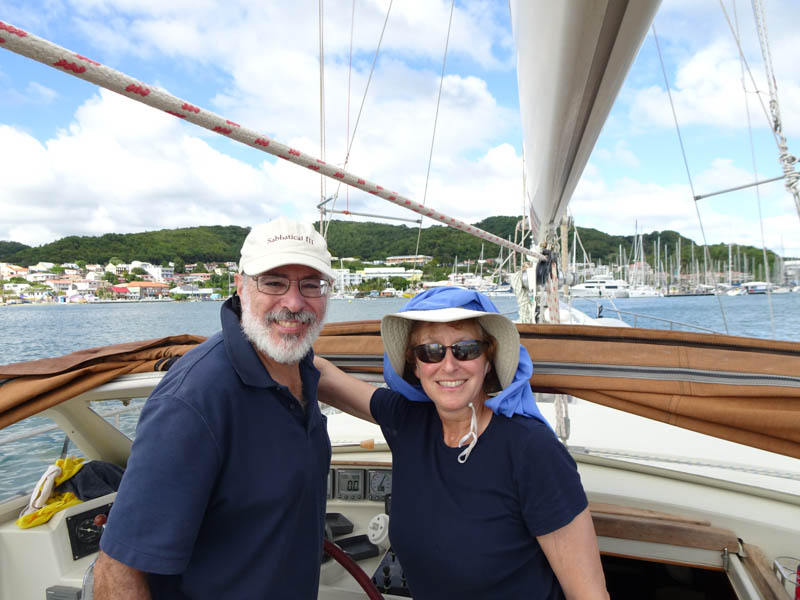
Atlantic Crossing Finale:
We arrived in Martinique at 13:40 on Monday, December 31st after exactly 19 days and 4 hours at sea. Our passage was approximately 2,950 nm or 3,400 miles.
Our passage was one of the best of our 12 year sojourn. It was tied with our Pacific passage from the Galapagos to French Polynesia as the longest, and yet this was one of the easiest. Part of this was due to the fact that we had a Norwegian couple, Tom-Erik and Vivi-Ann, with us and they were very competent, pleasant and helpful crew. Sharing the night watch among four people was so much easier than among two. Tom was particularly helpful in helping with meal preparations and cleaning up. I had prepared at least a dozen full dinners before the trip (and froze them) and with the addition of catching and cooking lots of fish, and Tom’s extra cooking (particularly with yummy egg and potato creations) plus a huge smoked Norwegian salmon, we had plenty of good food without too much hassle. It is hard to work in the galley while the boat is pitching around, even if it is just moderately pitching, so it was very helpful to have other hands ready to help.

We also had relatively benign weather conditions… lots of days with moderate winds, small swells and smooth sailing. Lots of blue skies and sunshine. Our timing was such that we enjoyed watching the moon wax full over the first ten days and so we had lots of moonlit nights and also many nights without much moon, but with brilliant stars. We also had a couple of days without wind, and a couple of days with way too much wind, but on average, it was quite comfortable and smooth.
Perhaps the biggest reason that the passage seemed easier than in the past is that we were so well prepared for it. Not only have we had many years of sailing experience, but Mark had done an amazing job of making sure that EVERYTHING on the boat was working perfectly before we left. Obviously anything can happen on a boat, and all sorts of mishaps can and do occur, no matter how well you plan, but really, he did such a thorough job of preventative maintenance, that we had a problem free passage. Nothing failed. Sails, rigging, engine, generator, water maker, water-pumps, bilge pump, AIS, GPS, radios, radar, refrigerator, freezer, nav-lights, etc.etc. If any of these things fails it can lead to catastrophe, or at least a much compromised passage. Everything worked perfectly.
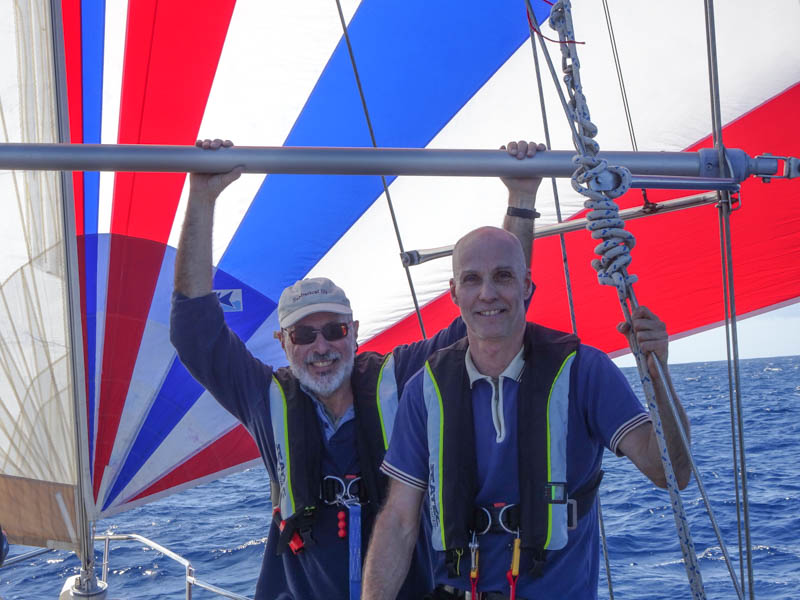

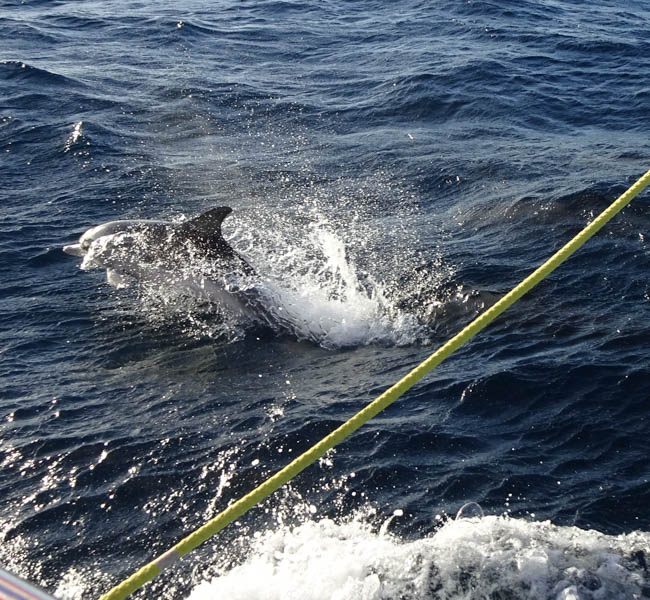
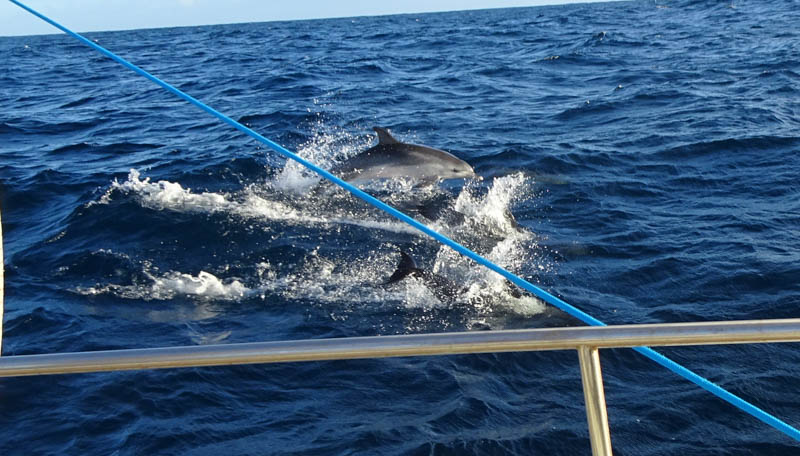

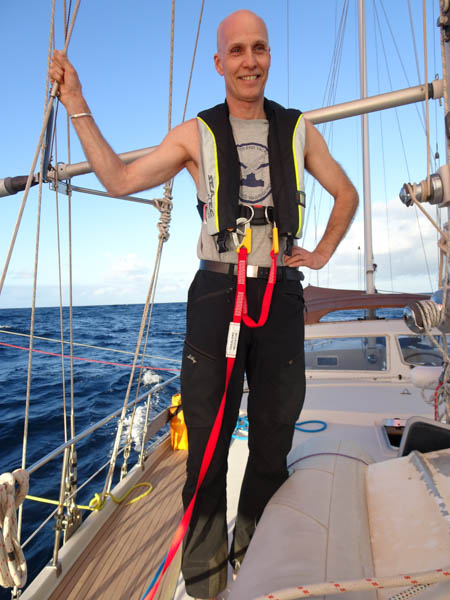

Even our precious propane tanks, which we have not been able to refill since we were in Italy 2 years ago, managed to contain just enough gas for us to cook with. Our first tank petered out three days before our arrival in Martinique, and we were able to switch over to our remaining half a tank and continue to heat water and prepare meals without resorting to turning on the generator for power.
Our arrival in Martinique also marked the completion of my (Laura’s) circumnavigation on Sabbatical III. I started this trip in December 2006 (from St. Martin in the Caribbean) and so this arrival back in the Caribbean marks the end of my circumnavigation. Mark officially finished his 5 months ago when we arrived in the Canaries.
More details of the last days of the trip:
We were able to sail continuously (no motoring) since the afternoon of December 25th, as the winds finally filled in for us. It was good timing as we were all feeling a bit sick from the diesel fumes we had to endure on and off for much of the previous two days. (We motored 45 hours of the 460 hour trip).
We were able to sail quite fast our last five days, starting out with the ballooner and genoa set out on poles, and then taking those down when the swells got too big and just sailing with our standard sail configuration of main, mizzen and genoa.
We had a number of squalls rolling through during the nights of the 28th and 29th, but we stayed dry and warm once we closed off the cockpit with our big zip-in waterproof enclosure. It was very cloudy for those days, and we got a lot of rain, something we have not seen much of for quite some time.
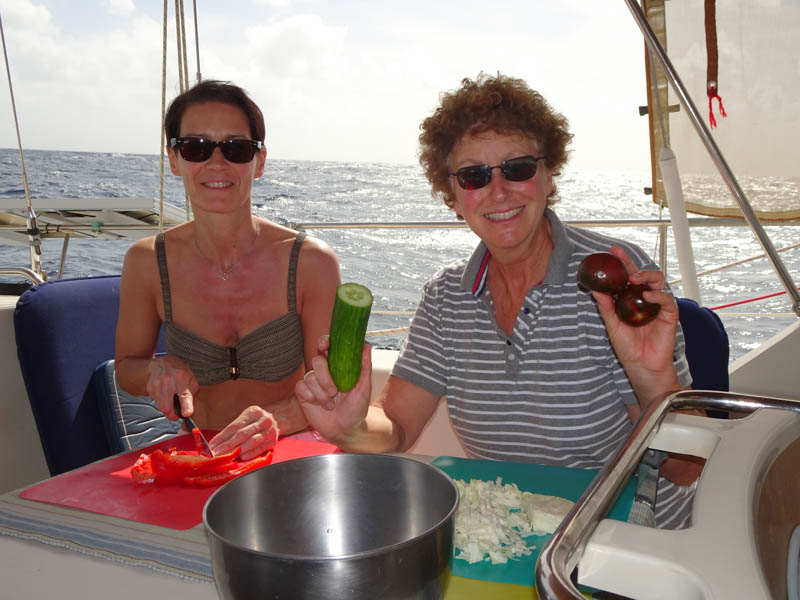
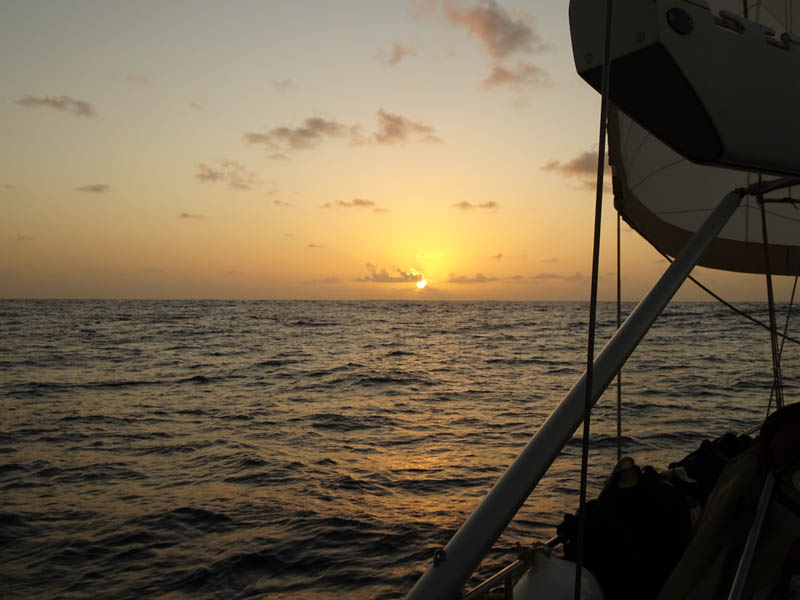
The last couple of days were quite uncomfortable due to the strong winds and big swells, and the nights were dark with no moon and little visibility because of all the clouds. Winds were in the mid to high 20’s but fairly stable in terms of direction (winds were ENE most of the trip). The swells were large, looking like 4 meters at times, but they were coming predominantly from behind the boat so it was not as uncomfortable as it could have been. Our motto became, “It could have been worseâ€.
As we approached Martinique on the morning of the 31st, the seas calmed quite a bit and it became a delightful sail once again. We did not sight land until we were just 20 nm from the island, approximately 10:00 a.m.
Just as we were getting within a few miles of Martinique we suddenly saw another sailboat on our AIS, the first sailboat we had seen since leaving the Canaries. It turned out to be a friend of ours, a British sailor named Michael, on his boat Simanderal (an Amel 55).
And then, just as we were ready to make one final tack and head into Sainte Anne’s bay, we hooked our last fish. We did not want to lose him, so we deviated a bit and pulled in a young King Mackerel. It was quite an exhilarating way to end the trip.
We spent two nights at anchor in the large bay at Sainte Anne awaiting an ok from the marina (Marina du Marin) for us to enter. Apparently no-one was working on New Year’s day which was fine with us as we really wanted to stay out at anchor and do some swimming and just relax after completing the passage. We couldn’t think of staying up til midnight, passing out at about 8:00 p.m. and not waking up until 12 hours later.
We are now in the marina and rearranging the boat from “long passage mode†to “cruising mode.†There has been lots of rain squalls that have rinsed all of the salt off the deck. We will report on our time in Martinique in our next blog post.
L.
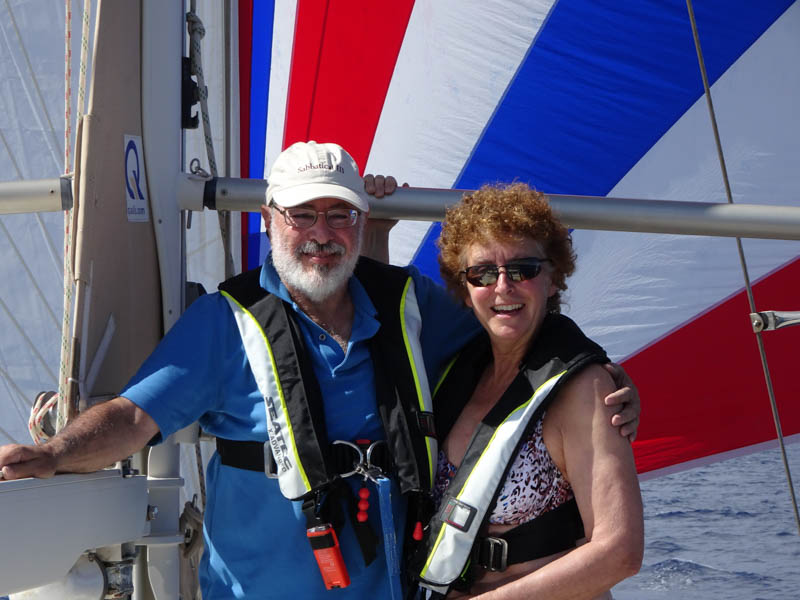

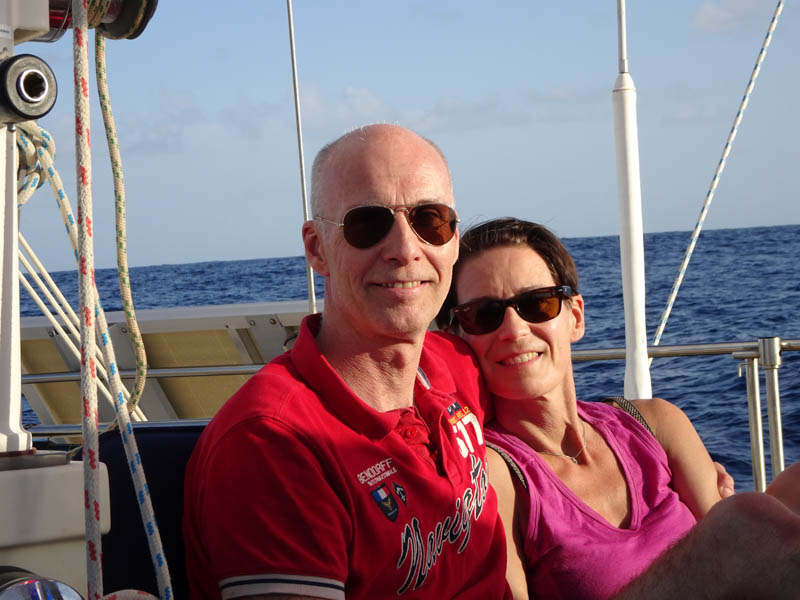
Photos added later (below):











